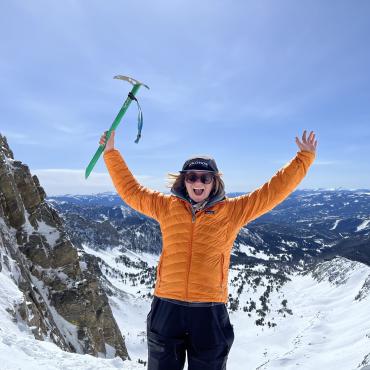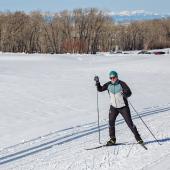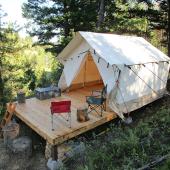Oh-Sh*t Kit
Planning for when it hits the fan.
Spend enough time in the backcountry, and you’re likely to encounter an oh-shit moment. A proper oh-shit moment can range from gear malfunction to injury, getting lost, an unplanned night out, or any combination thereof. These moments tend to throw your perfect backcountry plan out the window, requiring you to manage unforeseen, inconvenient, and sometimes dangerous situations, as best you can. As usual, preparation goes a long way.
The easiest way to eliminate oh-shit moments is to never go outside again—but let’s face it, that’s not an option. So, I pack an “oh-shit kit”—or OSK, if you prefer to avoid moderate profanity. It’s a pre-prepared kit of repair, spare, and survival items that could come in handy if I end up in a pickle. Sure, one could go to an outdoor store and purchase some frilly pre-made thing, but it’s far cheaper and more practical to put one of these together yourself. Plus, you can customize it to your own particular needs.
“The best safety gear is the gear you’ll actually carry.”
With a self-assembled OSK, you’ll know exactly what you have, where it is, and—hopefully—how to use it. Tent poles prone to breaking? Include extra duct tape. Longer outing? Pack water purification. Chilly forecast? Make sure that space blanket is in there. It’s also important to toss in activity-specific repair items—e.g., tubes, pump, and tool if you’re going biking. For a lot of these items, a simple trip to the hardware store will do.
Here’s what my fall OSK looks like:
–Headlamp
–Multitool (knife, plyers, screwdriver)
–Water-resistant matches
–Dry firestarter
–Duct tape
–Paracord
–Aquamira or purifying tablets
–Space blanket
–Large black trash bag (makeshift bivy sack)
–Extra batteries
–Voile/Titan ski strap (these are always useful)
–Activity-specific repair items
–inReach or satellite phone
There are a lot more items that could be included on this list. However, a wise mentor of mine once told me, “The best safety gear is the gear you’ll actually carry.” And for me, like most, a less-bulky kit will more likely get stuffed into my pack. I can pack down and fit most of the above items in a quart-sized Ziploc baggie—minus the headlamp, multitool, and sat phone. (Note that this kit is in addition to, not a replacement for, a first-aid kit.)
Oh-shit moments happen—especially in the backcountry. But if you are prepared with proper gear, these moments can be a lot less shitty, and the kit could save your life.














